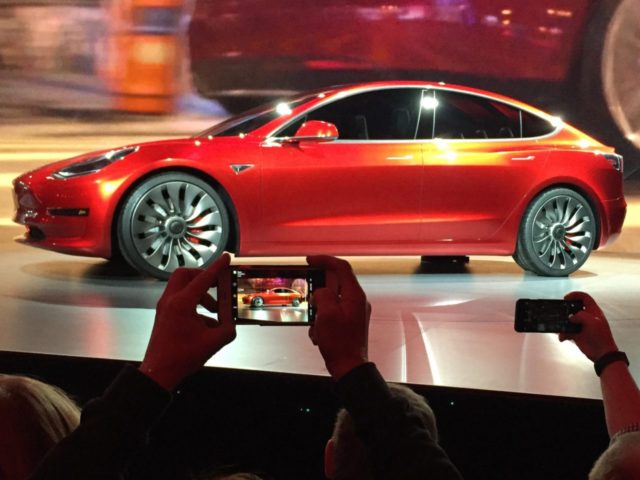Motor Trend magazine declared its first road test of a production Tesla Model 3 all-electric-vehicle as a winner — if customers are willing to pay $60,000.
Motor Trend has stated that the “original Tesla Model S was a proof of concept — it was possible to make a long-range electric vehicle. The Model X showed that you could make an electric SUV. But neither was affordable to the masses.” It expected the mass-volume introduction a Tesla Model 3, priced at $35,000, would either be the most important or the worst motor vehicle launch of the century.
Success would change the industry and for the first time would force all car manufacturers to introduce full lines of high-volume electric vehicles. But failure could destroy Tesla and guarantee that internal combustion engines would continue to dominate the auto industry volumes for the foreseeable future.
Most analysts had expected the hype that Tesla’s Model 3 mass-market car would only cost $35,000 was a bait-and-switch marketing ploy for a higher-priced vehicle. Fiat/Chrysler’s CEO Sergio Marchionne told Motor Trend in April 2016, “I’m not surprised by the high number of reservations but you have then to build and deliver them and also be profitable.”
The production Model 3 that Tesla gave Motor Trend for a morning road test through Old Topanga Road in Malibu, just hours before the delivering the first 30 Model 3s, turned out to be a $59,500 fully-loaded production model with the performance 235-horse-power drivetrain that leaps from zero to 60 miles-per-hour in 5.1 seconds.
The fully-optioned unit included a $5,000 “Premium” interior sound and tech package, $9,000 for 50 percent longer-range battery, $5,000 for ‘Enhanced Autopilot’, $3,000 for ‘Full Self-Driving Capability’, $1,500 for the over-sized 19-inch wheels, and $1,000 for multi-coat paint job.
Motor Trend reports that the Model 3 production unit looked “remarkably similar to the prototype,” with the nose softened to make room for proximity sensors and the rear lines doing “double-duty as air-separation creases.” The main difference is the trunk that was criticized in the prototype as too small, but now is 15 cubic feet with 60/40 folding rear seats that would allow driving with a surfboard inside the car.
Motor Trend’s test driver was thrilled when he put his foot down on the accelerator and felt the smooth “gush of torque” that rocketed the car forward. He commented that unlike the Tesla Model S’s body panels, which can rattle annoyingly during acceleration, the Model 3 seems to have better fit and be much quieter.
Once in the curving Old Topanga Highway, the driver described the cornering as the scalpel-like equivalent of the breath-taking handling of an Alfa Romeo Quadrifoglio, which has a base price of $73,595. He was especially impressed with the steering ratio due to the battery underneath the floor, lowering the center of gravity and creating “nearly-nil body roll.”
But Tesla’s stock price was essentially flat on the July 28, due to CEO Elon Musk stating that Tesla will not be producing any of the $35,000 priced Model 3 units until the end of the year. That reinforced the doubts that Tesla will deliver on promises to generate $1.42 billion in revenue by delivering 327 Model 3 cars by September 30 and another 32,223 Model 3s in the fourth quarter, before Tesla’s annual two-week Christmas shutdown.
Seeking Alpha’s Mark Hibben estimates that the lower production means that Tesla will fail to hold its current 27 percent gross margin, although the higher-priced units will help the revenue side. Hibben projects that the only good news is that Tesla could generate a small operating profit in the fourth quarter by shipping only high-priced units.
Achieving a glowing report from Motor Trend is a great accomplishment, but Wall Street still doubts that Tesla can successfully mass-produce 500,000 Model 3s per year and then make money selling the cars at a unit price of $35,000.

COMMENTS
Please let us know if you're having issues with commenting.